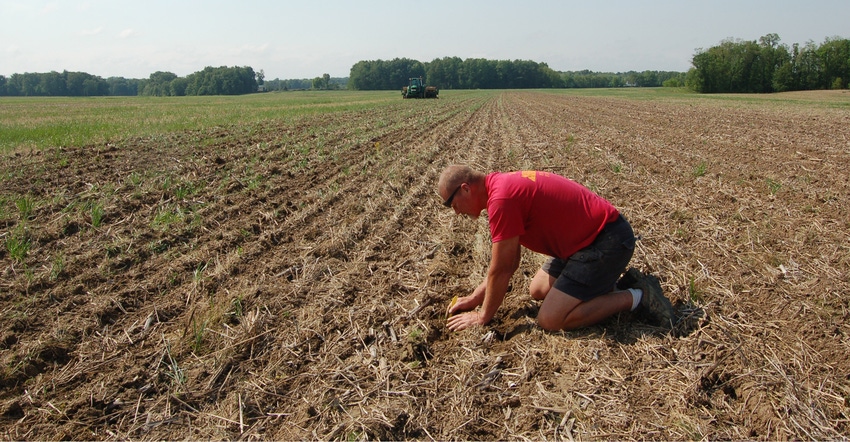
Yes, you can plant corn too deep. Any agronomist worth his salt would agree. But you can also plant too shallow. An Agco Crop Tour study indicated that planting as shallow as 1 inch could risk problems with stands and lower yields. There are also other studies that indicate planting as shallow as 1 inch is far riskier than planting as deep as 3 inches.
Now, one more study appears to confirm that finding. Jason Webster, manager of the Precision Technology Institute in Pontiac, Ill., included a study that showed the risks for planting too shallow. PTI is a roughly 300-acre farm operated by Precision Planting, which does a variety of replicated trials each year, and uses the facility to allow customers and potential customers to check out new planting and fertilizer application technology each summer.
The 2-inch depth produced maximum yield in the study. That’s probably not surprising. However, you may be surprised to know that planting just a half-inch shallower, at 1.5 inches, dropped yield by 11.2 bushels per acre, and net gross return by $41 per acre. Going a half-inch deeper, at 2.5 inches, dropped yield, but by less than a bushel per acre, costing under $3 per acre in lost revenue. Going to 3 inches instead of 2 inches dropped yield only 2 bushels per acre, or $7.33 per acre.
Going all the way to 3.5 inches deep lowered yields more than 10 bushels per acre vs. a 2-inch planting depth and shaved off about $37 per acre in income. That’s still slightly less than the negative impact of planting at 1.5 vs. 2 inches deep.
The real kicker came at planting only 1-inch deep in this study in 2020. Yield fell off the charts, more than 37 bushels per acre less than the 2-inch planting depth, and gross returns dipped about $140 per acre.
Answering ‘why’
The biggest key to the huge impact for shallow planting in the 2020 PTI study was moisture content in the furrow where the seed was placed, Webster says. With SmartFirmers from Precision Planting, the furrow soil moisture content will read out on the 20/20 display in the cab, along with other parameters measured by SmartFirmers. That makes it easy to track actual moisture content and document changes in moisture as a factor, rather than just guessing at soil moisture, he notes.
The average soil moisture contents for these various planting depths helps explain why the shallower plantings struggled compared to the deeper, Webster says. The moisture percentages in the seed trench by depth are:
19.1% at 1 inch
24.4% at 1.5 inches
32.8% at 2 inches
34.5% at 2.5 inches
35.8% at 3 inches
35.8% at 3.5 inches
Webster says most people agree 32% soil moisture is ideal. Soil moisture was simply on the low side in the shallower plantings, affecting germination. There was plenty of moisture at 2 inches and deeper, he observes. For the deepest depths, he observed longer time to emergence. Webster suggests that contributed to lower final yields compared to the 2-inch planting depth.
About the Author(s)
You May Also Like




